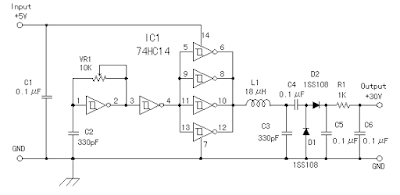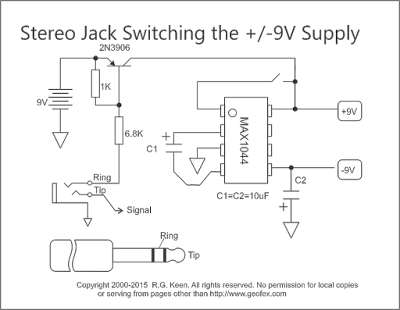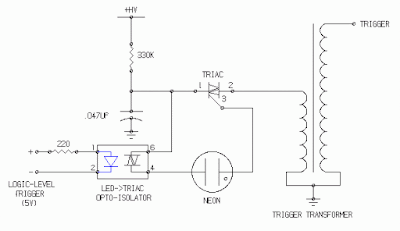This is the Elec +30V power supply with +5V Circuit Diagram. I made the power supply which makes about +30V with +5V power supply.
The direct current is changed into the alternating current by the oscillator which used the schmitt trigger inverter which has the hysteresis characteristic and the resonance circuit.
Elec +30V power supply with +5V Circuit Diagram
The high DC voltage (+50V) is made with the alternating voltage using the voltage amplification rectification circuit.
The output voltage of this circuit changes mainly when the load changes. So, this power supply can be used only as the power supply of the circuit that the load is constant or the circuit which doesn't have a problem even if the voltage changes.











